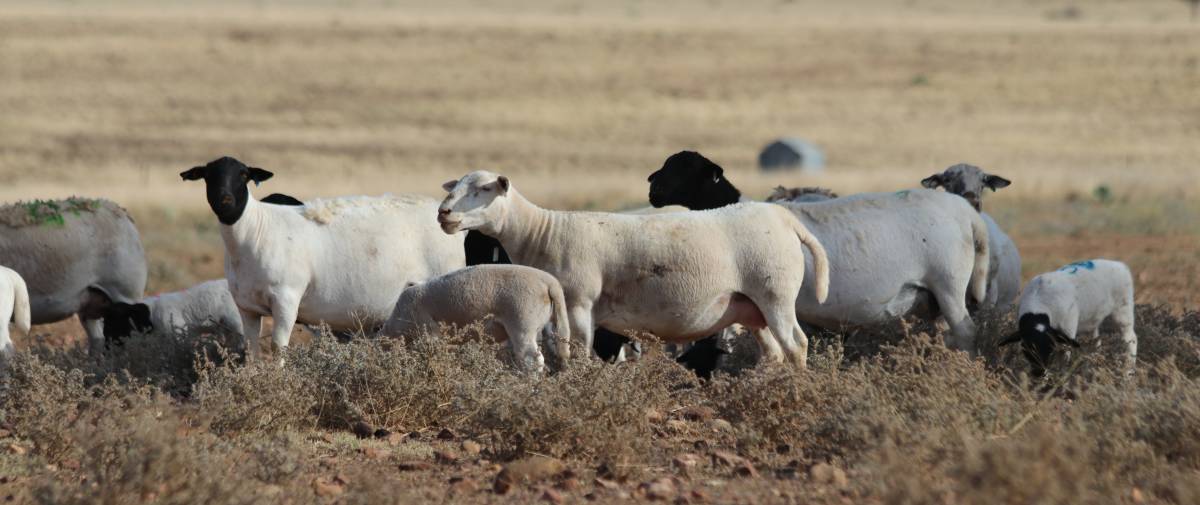
DROUGHT has been the catalyst for Amarula Dorpers to focus on profit over production, as the stud looks to improve quality rather than maintain high numbers.
The Gravesend, NSW-based stud, owned by Justin and Lorroi Kirkby, is one of the leading Dorper and White Dorper studs in the country, focusing on producing rams to meet the needs of commercial producers.
The Kirkbys were previously running 700 stud Dorper ewes alongside a commercial Dorper flock of 1200 ewes, as well as 100 stud White Dorper ewes on the 2200-acre property, but after a prolonged dry period, they’ve made the decision to cull heavily based on fertility, rather than hand feeding or finding agistment.
They’ve had to sacrifice the commercial flock with the drought, but it made sense when they crunched the numbers, Mr Kirkby said.
They’re currently running about 700 stud Dorper ewes and 300 White Dorper stud ewes.
“We would have been feeding 1200 ewes to get a $150 lamb out of them, but if we focus on the stud ewes, we can potentially get a $1500 ram from each, and we’re also continuing the genetics in the stud.
“Some farmers have the ability to completely destock and buy back in when the season improves, but we can never buy in 20 years of breeding. By removing the commercial ewes we can concentrate on the stud and quickly build up our numbers when the season turns. That’s the beauty of the Dorper – we can double numbers in two years.
“When we started, almost 20 years ago, the aim was to produce quality but also increase numbers, but we want to be remembered, not for having the most ewes, but the highest quality Dorper rams and ewes, producing high quality progeny with meaty carcases and outstanding eating quality.”
Culling on fertility means there’s more pressure for each ewe to perform, but it will lead to big improvements in lambing percentages.
“Adversity brings with it opportunities to improve the ewe flock,” Mrs Kirkby said,
“We have a policy of no lamb, and you’re out, whether they’re maidens or adults, and ultimately in a year or two, every ewe will be in lamb.
“We started doing that a few years ago and we were getting between 120 per cent and 140pc lambing, but with those high percentages, some ewes still went under the radar. We’re culling even harder on fertility and lamb survivability, to get around 170pc to 180pc.
“Dorpers can lamb every eight months or sooner, which all comes down to management, so in good seasons they’ll be joined when the lambs are six weeks old, and we’ve reduced joinings to five weeks so only the really productive ewes get in lamb.”
Click here to read the full story by Ruth Schwager for Farm Weekly.

